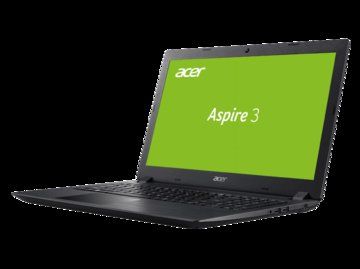
Voici tous les 13 avis et les tests que nous avons trouvé sur le Ordinateurs Portables Acer Aspire 3 avec les 10 notes et les commentaires des testeurs dans leur review.
Parmis ces tests des sites & magazines internet spécialisés dans les Ordinateurs Portables, 10 ont donné une note et on obtient une note moyenne de 3.3/5 pour ce produit de Acer.
En bref
- 13 tests trouvés avec 10 notes pour Acer Aspire 3
- On obtient une note moyenne de 3.3/5, soit 65.2/100
- Attention ce produit a été noté 1 fois séverement, avec des notes tres en dessous de la moyenne, lisez bien les tests associés a ces notes.
Les Notes sur Acer Aspire 3
Source: https://www.commentChoisir.fr
| 4/5 Tech Advisor | 79/100 NotebookCheck | 3/5 LaptopMedia |
| 3/5 PCMag | 6/10 RTings | 3/5 Nerd Mobile |
| 2/5 Chip.de |
Les "Pour et Contre" sur Acer Aspire 3 détails des avis et notes
Pour mieux comparer, nous avons cherché pour vous les avantages et inconvénients de Acer Aspire 3 et les notes données par les sites spécialisés.
Nous n'avons pas trouvé de "Pour & Contre" chez Tech Advisor.
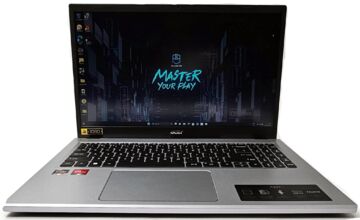

format pratique
performances suffisantes pour les applications simples
faible bruit
Possibilités de mise à niveau
seulement un port USB 3.0
L'affichage est facile à franchir
faible luminosité
[77/100] testé le 05/03/2018 - Test Acer Aspire 3 (i3-6006U, HD520) Laptop [lire le test complet sur NotebookCheck]
[76/100] testé le 14/05/2023 - Acer Aspire 3 Laptop-Test: Ein erschwingliches Mendocino Angebot mit ausgezeichneter Akkulaufzeit und einem unterdurchschnittlichen Bildschirm [lire le test complet sur NotebookCheck]
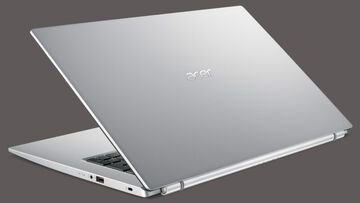

Performances et refroidissement étonnamment bons
Châssis robuste
Pas de lecteur de carte SD
Manque d?un port USB Type-C
testé le 01/03/2022 - Test Acer Aspire 3 (A317-53) ? 17-inches of budget computing [lire le test complet sur LaptopMedia]
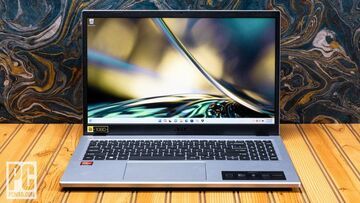

Autonomie étendue de la batterie
Connectivité Wi-Fi actuelle
Prix de départ compétitif
Design daté, un peu fragile
Affichage terne
La configuration supérieure est surclassée
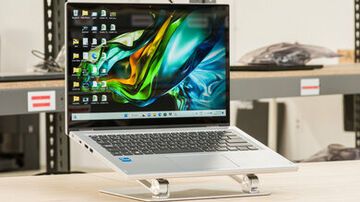

Le processeur peut gérer la plupart des tâches de productivité légères.
Grande sélection de ports.
Courte durée de vie de la batterie.
Limité à 8 Go de RAM.
[6/10] testé le 16/11/2023 - Test Acer Aspire 3 Spin 14 (2023) Laptop [lire le test complet sur RTings]
vie de batterie excellente
Clavier et pavé numérique de bonne qualité pour le prix
très bonne Performance par rapport au prix
Connectivité
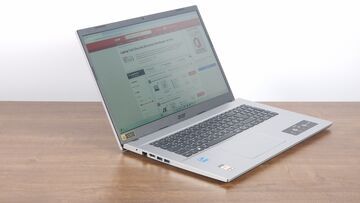

Équipement largement adapté à un usage quotidien
Luminosité de l'écran seulement suffisante
Affichage sans couleur
Pas de port USB de type C disponible
La webcam et le touchpad pourraient être meilleurs.
Webcam HD
Performance solide de lecture vidéo
Performance décente de l'application professionnelle
Autonomie de batterie d'une journée entière
Affichage de base en 1080p
Petit disque de stockage de 128 Go
Nous n'avons pas trouvé de "Pour & Contre" chez Trusted Reviews.
Acer Aspire 3 Avis consommateurs sur les plateformes de vente
Les notes des sites et magazines internet peuvent etre peut-etre biaisés, au moins avec les avis client et des utilisateurs qui ont acheté Acer Aspire 3 sur amazon ou la fnac, on est sur d'avoir de vrais critiques sur ce produit. (les liens vers les magasins sont sponsorisés).
Tests des autres Ordinateurs Portables Acer
Test Acer Predator PH18-73-RJ93, Test Acer Swift Edge 14 AI, Test Acer Swift Air 16,...et retrouvez tous les tests de la marque Acer
